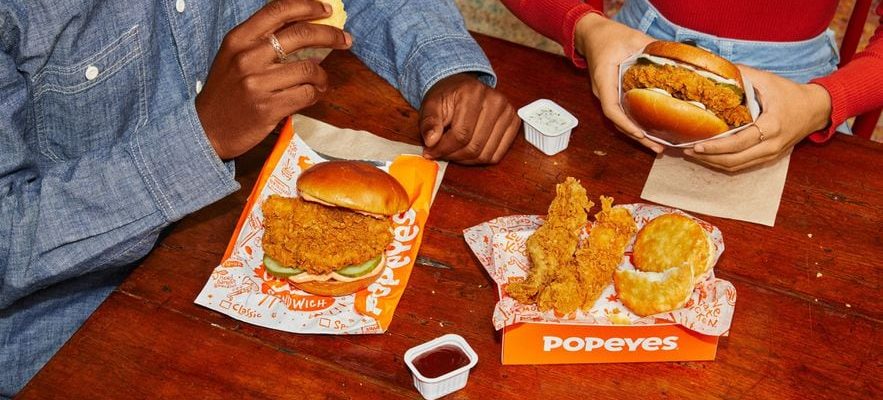A long queue in the early morning in front of a store. Some have been waiting since the evening before, in the bitter cold. These customers do not covet the new iPhone model or the latest generation of video game consoles, but… donuts. The scene took place on December 5 under the Canopée des Halles, in Paris, where the American brand Krispy Kreme chose to install its “flagship” – understand its flagship store – to kick off its entry into the French market. The donuts are made on site in a 500 square meter space, where around a hundred people have been recruited. Created almost ninety years ago across the Atlantic, this chain, specializing in the famous holey pastry, waited patiently for its turn to establish itself in our territory, even though it is already present in 35 countries.
In recent years, Krispy Kreme is not the only American fast food brand to have tried the tricolor bet. A few months ago, it was the fried chicken specialist Popeyes, direct competitor of KFC on a global level, which opened its first restaurant in Paris, before increasing its openings in France. “I am very surprised by this renewed interest in the French market,” comments Bernard Boutboul, founder of the Gira firm, specializing in restaurants. “I find it difficult to understand this offensive when we see that McDonald’s has completely de-Americanized its concept and highlighted that Americanism was not the French’s cup of tea.” So why now? The prospect of the Olympic Games may have weighed in the balance, as foreigners are very fond of American fast-food products. “France is an extremely buoyant market for catering,” adds Bernard Boutboul.
Concepts sometimes adapted
To try to stick to the habits of French consumers, Popeyes has chosen to adapt part of its concept. The cheddar of American burgers has, for example, given way to Cantal. The poultry, French, is marinated for twelve hours, and the ingredients are fresh, promises the chain, which had already attempted a foray into the French market in 2018, before packing up. “When we talk about the establishment of American brands in France, we immediately think of the success story of McDonald’s and its challenger, Burger King. We talk less about those who did not succeed. When the Popeyes chain arrived, there were neither the ingredients gathered nor sufficient structuring for the brand at the European level, unlike today,” explains Olivier Rego, general manager of Popeyes France.
Popeyes chicken burgers
© / Popeyes
Its plan for the next ten years is ambitious to say the least: 300 openings are planned throughout France and not just in large cities. “There is a place in the market. The French are the leading consumers of chicken in Europe. There is a vision of the glass half empty which implies that consuming American would amount to a renunciation, a dilution of our culinary culture. On the contrary, it expresses the curiosity of the French for cooking,” the manager wants to believe.
More or less successes in the past
Before Popeyes, Krispy Kreme or Carl’s Jr., the Steak ‘n Shake brands, in 2014, and Five Guys, in 2016, had paved the way, with varying degrees of success. The first is struggling, and closures are increasing. The second, presented upon its arrival as serving the best burger in the world, prized by the Obama family themselves, experienced a breakdown two years after its arrival. Initially, its management promised around ten openings per year to reach forty in 2019. Ambitions have since been reduced. The bar of 30 locations should be crossed at the beginning of 2024. “The administration is slow, it takes a long time to open a restaurant. We also have a space problem. Below 250 square meters, we don’t know how to do it. “There was also a lot of fear among landlords. Everyone was slowing down, things have been getting better for a year,” assures Constance Ergand, communications manager for Five Guys France, who promises to catch up with cruising speed. .
Krispy Kreme has so far passed its entry test. Since the opening, around 3,000 customers have come to the checkouts of the flagship each day. “To our great surprise, there is a real audience for this type of product and this iconic brand. All those who follow the series on Netflix or The Simpsons were perfectly experienced in the exercise”, estimates Alexandre Maizoué, general director of the chain in France. Its donuts should soon arrive in train stations, metro stations, and even supermarkets, where negotiations are underway. Wendy’s, a another legendary burger brand, could arrive in its turn. A competitor, however, wonders: “Its arrival has been announced for centuries and it is constantly postponed.” The fear that the French market will struggle to digest a new channel?
.
